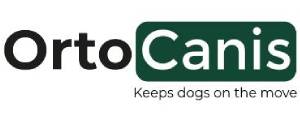Thermotherapy
This group of therapies uses heat to enhance recovery from injuries or musculoskeletal system conditions.
Continuous ultrasound is the most frequently used, the temperature of local tissue increases and it creates an anti-inflammatory and defibrillating effect. Microwaves and shortwaves can also be used. Various equestrian centers have rooms with infrared, the heating effect of the infrared light is very superficial.
The ultrasound used in physical therapy can vary from 0.5 to 3 MHz depending on the depth at which we want it to work; 0.5-1 MHz ultrasound can reach 8-12 cm deep.
Ultrasound emissions can damage the tissues being treated if they are not used properly, they can cause severe burns and irritate the periosteal, which is a particularly sensitive ultrasonic beam structure. Ultrasounds are used to treat fibrosis, tendinitis, bursitis, traumatic swellings, muscle injuries ...
Electrical Stimulation
We can use muscle stimulators to work specific muscle groups that, whether partially unnerved or keeping their function intact, have lost contractile capacity and strength for various reasons.
Antalgic Current Therapy
There are different waveforms that make up different groups of currents with analgesic effects. We can distinguish between Russian Stimulating Currents, Traëbert currents, Faradica current, interferential current or TENS (Transcutaneous electrical nerve stimulation), the most commonly used at the moment.
The mechanism of action varies depending on the parameters used: intensity, frequency, amplitude. We can act by stimulating the generation of endorphins at the systemic level (increased up to 22%) or by the Gate Control System mechanism. The analgesic currents are used for pain in the back, muscle spasms or algic processes in the limbs.
Laser Therapy
There are different types of low intensity lasers, “Low Energy Laser Therapy” (LELT), depending on the diode that produces the polarization of the light beam. There exists controversy over the depth reached by the beam and the physiological effects on tissues; the scarring and analgesic effect of the laser determine their main applications: wound healing, tendon repair ...
A high intensity laser was recently developed, a new concept of laser that, in this case, is a type IV, a hundred times more powerful than a low level laser, and has opened the door to new therapies for tendon and ligament repair.
Magnetic TherapyThe effectiveness of magnetotherapy on soft tissue is questionable, even so, magnetic blankets are used to relax the muscles as a way to prepare animals for competition, increase trophism, ...
The beneficial effect it has on delays of bone consolidation is much more evident in scientific literature; magnetotherapy is a good solution for pseudo-arthritis problems, decalcification or fractures not healing quickly.
Cryotherapy
Applying ice, in the acute and subacute as well as in the chronic stage, is one of the most widely used therapies by physiotherapists for its substantial anti-inflammatory and hyperaemic potential.
In any acute traumatic inflammatory process, applying ice for 20-30 minutes every two hours prevents swelling from forming in the area. There are specific tools that greatly facilitate the application of cryotherapy on dogs.
Manual Therapy
Stretching and massage are classic examples of manual therapeutic tools used by physiotherapists to reduce muscle tension, contractures, increase muscle trophism, reduce fatigue, prevent muscular-tendonitis injuries, help drain venous or lymphatic stases processes, etc.
Exercises, hydrotherapy and thalassotherapy (bathing in the sea), the use of weights, bandages ... are other examples of manual therapeutic techniques.

List of Most Common Pathologies in Canine and Feline Physiotherapy and Rehabilitation
The most common musculoskeletal pathologies that can be treated with physiotherapy and rehabilitation in young, adult and older canines and felines are:
1 - In the backbone:
-
Fractures
-
Listhesis
-
Discopathies
-
Disc Protusion
-
Paresis
-
Tetraplegia
-
Wobbler's Syndrome
-
Cauda Equina Syndrome
2 -In front limbs:
Shoulder:
Dislocation
Osteochondritis dissecans of the humeral
Bicipital tenosynovitis
Osteoarthritis
Peripheral neurological lesions
Elbow:
Anconeal Process
Coronoid process
Dislocation
Osteochondritis
Osteoarthritis
Carpus:
Traumatic injuries
Carpal hyperextension
Ligamentous injuries
3 -In hindlimbs:
Hip:
Pelvic osteotomy
Osteotomy femoral head and neck
Hip dislocation reduction
Hip replacement
Hip dysplasia
Osteoarthritis
Peripheral neurological injuries (sciatic)
Knee:
Cruciate ligaments
Patellar Dislocation
Osteochondritis dissecans of the knee
Osteoarthritis
Tarsus:
Fractures
Dislocations
4 -In general:
Muscle Tears
Tendon and ligament injuries
Pathological fractures
Wound healing
Spondylosis
Joint Diseases
Osteosynthesis
Discopathies
Ortocanis.com

